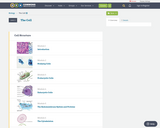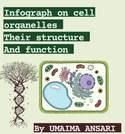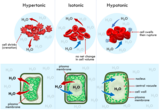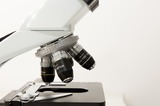
9 Results


Biology is designed for multi-semester biology courses for science majors. It is grounded on an evolutionary basis and includes exciting features that highlight careers in the biological sciences and everyday applications of the concepts at hand. To meet the needs of today’s instructors and students, some content has been strategically condensed while maintaining the overall scope and coverage of traditional texts for this course. Instructors can customize the book, adapting it to the approach that works best in their classroom. Biology also includes an innovative art program that incorporates critical thinking and clicker questions to help students understand—and apply—key concepts.
- Subject:
- Biology
- Life Science
- Material Type:
- Full Course
- Provider:
- Rice University
- Provider Set:
- OpenStax College
- Date Added:
- 08/22/2012

- Subject:
- Biology
- Life Science
- Material Type:
- Unit of Study
- Provider:
- Rice University
- Provider Set:
- OpenStax College

By the end of this section, you will be able to:Describe the structure of eukaryotic cellsCompare animal cells with plant cellsState the role of the plasma membraneSummarize the functions of the major cell organelles
- Subject:
- Applied Science
- Biology
- Life Science
- Material Type:
- Module
- Date Added:
- 07/10/2017

- Subject:
- Applied Science
- Biology
- Life Science
- Material Type:
- Module
- Date Added:
- 07/10/2017

infograph on plant cell organelles.
- Subject:
- Biology
- Botany
- Material Type:
- Homework/Assignment
- Author:
- Umaima Ansari
- Date Added:
- 01/05/2024

Can you pull a car with cordage made just from a plant? We put it to the test! This clip with Jefferson Patterson Park and Museum's Educator Nate Salzman provides a simple demonstration proving that a cell's microscopic structure affects its macroscopic properties. Included in the video is the very simple method needed to produce and test cordage from yucca leaves on your own.
If you're thinking of using this in a classroom, considering pairing this exploration of cells' structures with an engineering challenge! Yucca fiber can be made without boiling the leaves, if needed: students can either pound/mash leaves to isolate fibers or fibers can be peeled from wet leaves and used while still "green" (any cordage made from green fibers will loosen as it dries, however).
This resource is part of JPPM’s open educational resources project providing education content from our in-house educators, horticulturalists, curators, and conservationists at our 560 acre public park. The grounds have provided a home for different peoples for over 10,000 years and includes extensive archaeological sites, multiple ecosystems, and a 1930s farmstead designed by architect Gertrude Sawyer for the park’s namesake, Jefferson Patterson.
- Subject:
- Applied Science
- Biology
- Botany
- Engineering
- Environmental Science
- Life Science
- Material Type:
- Activity/Lab
- Lecture
- Provider:
- Jefferson Patterson Park and Museum
- Author:
- JPPM Admin
- Date Added:
- 10/01/2021

This is an illustration of environmental tonicity conditions for animal cells and plant cells. The response of red blood cells and platn cells to hypertonic, isotonic, and hypotonic conditions is indicated.
- Subject:
- Anatomy/Physiology
- Biology
- Botany
- Environmental Science
- Material Type:
- Diagram/Illustration
- Author:
- Eunice Laurent
- Date Added:
- 05/25/2024

The smallest unit of life is the cell. Cells are tiny factories that work with incredible precision. All living organisms consist of one or more cells. Regardless of their shape and form, which vary greatly, in each cell we can distinguish common organelles. The two most important cell categories are animal and plant cells. In this lesson, we will talk about the similarities and differences of the organelles found in animal and plant cells as well as their functions.
- Subject:
- Biology
- Material Type:
- Lesson Plan
- Author:
- Koni Drampala
- Date Added:
- 03/01/2018